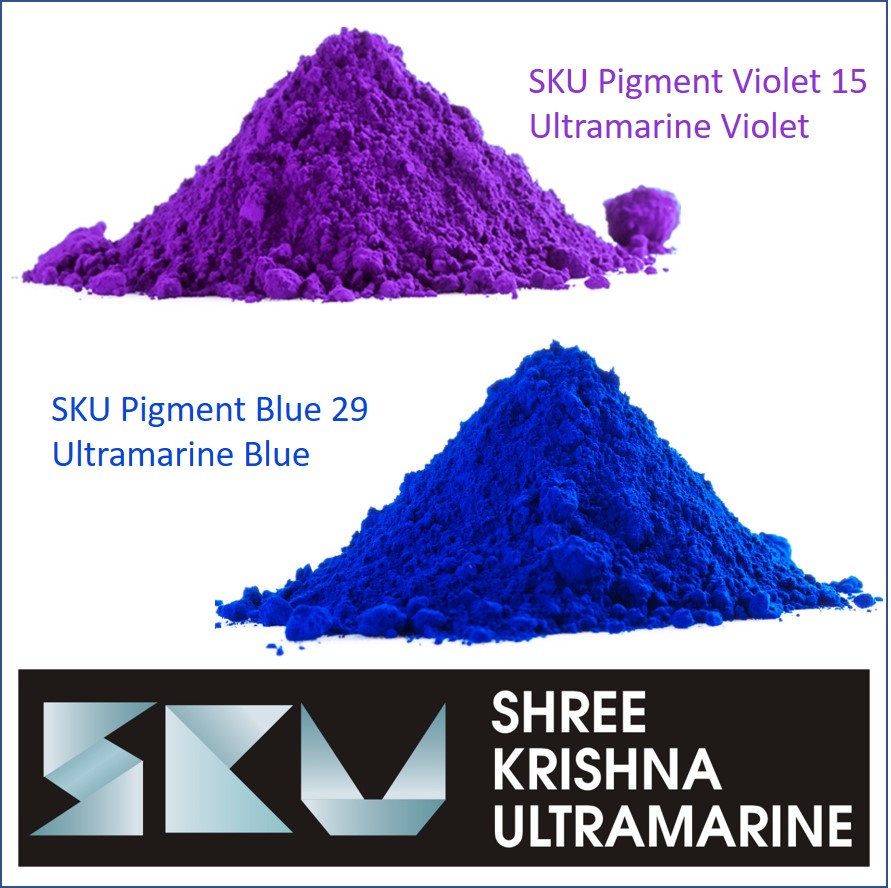Ultramarine Pigments: From Ancient Art to Modern Industry

For centuries, color has shaped art, design, and industry. Among the most celebrated hues, Ultramarine stands out for its depth and richness. Today, companies like SKU Pigments specialize in manufacturing high-quality Ultramarine pigments, including Ultramarine Blue, Ultramarine Violet, Pigment Blue 29, and Pigment Violet. From paints and plastics, Ultramarine has become the standard of modern blue pigments.
The History and Significance of Ultramarine
The name Ultramarine comes from the Latin “ultra mare,” meaning “beyond the sea,” a reference to lapis lazuli originally imported from Afghanistan. For centuries, it was the most expensive pigment, used by Renaissance masters to illuminate manuscripts. It symbolized luxury and spirituality.
Modern chemistry made it possible to produce artificially Ultramarine pigments, bringing the once-exclusive shade into mass production. This breakthrough turned a precious rarity into a widely available solution for countless sectors.
Why Ultramarine Blue Leads the Industry
Ultramarine Blue pigments—the synthetic form of Pigment Blue 29—are the most widely used. Known for their lasting vibrancy, they are sustainable and reliable. They are used in:
• Paints and coatings for rich tones.
• Plastics and rubber, thanks to chemical safety.
• Publishing and packaging, where sharpness is vital.
• Personal care, given their non-toxic nature.
This balance of performance and safety keeps Ultramarine Blue among Pigment Blue 29 the global color leaders.
The Elegant Appeal of Violet Shades
Ultramarine Violet offers subtle elegance that appeal in decorative paints. Pigment Violet derived from Ultramarine is eco-safe, making it ideal for sensitive products.
Its muted shade enhances luxury packaging, while ensuring stability without chemical breakdown.
Pigment Blue in Modern Industries
Pigment Blue—particularly Ultramarine Blue pigments—remains a core pigment. It offers eco-friendly performance for:
• Automotive paints with brilliant sheen.
• Consumer goods, ensuring long-term appeal.
• Construction materials, adding strength and aesthetics.
This wide applicability ensures Pigment Blue’s future relevance.
The Benefits of Blue and Violet Pigments
• Non-Toxic & Safe: Suitable for sensitive products.
• Heat & Light Resistant: Reliable even in high-heat industries.
• Eco-Friendly: Reduced environmental impact.
• Cost-Effective: Budget-friendly industrial choice.
• Versatile: Across paints, plastics, printing, and construction.
Ultramarine in Modern Industries
1. Paints & Coatings: Decorative finishes.
2. Plastics & Rubber: Safe for packaging.
3. Cosmetics: Skincare-safe pigments.
4. Construction: Flooring products.
5. Printing & Inks: Precision printing.
The SKU Pigments Advantage
SKU Pigments stands among global suppliers, offering eco-conscious solutions in Ultramarine pigments. Their product portfolio includes:
• synthetic Ultramarine for mass production.
• Ultramarine Violet and Pigment Violet for refined finishes.
• Custom shades for niche industries.
Their reputation is built on global reach and green practices.
Final Thoughts on Ultramarine Pigments
From a rare treasure to a global industrial pigment, Ultramarine has stood the test of time. Whether it’s the timeless vibrancy of Ultramarine Blue, the sophistication of Ultramarine Violet, or the stability of Pigment Blue 29, Ultramarine pigments remain essential.
With SKU Pigments as a trusted partner, industries achieve innovation with color. As demand for non-toxic pigments rises, Ultramarine will remain dominant in global markets.
FAQs
1. What is Ultramarine?
A vibrant pigment from lapis lazuli, now produced synthetically.
2. What is Pigment Blue 29?
The standard code for Ultramarine in industries.
3. Where is Ultramarine Violet used?
In eco-friendly and children’s products.
4. Are Ultramarine pigments safe?
Certified safe for cosmetics and toys.
5. Why choose SKU Pigments?
Because of quality, eco-focus, and range.